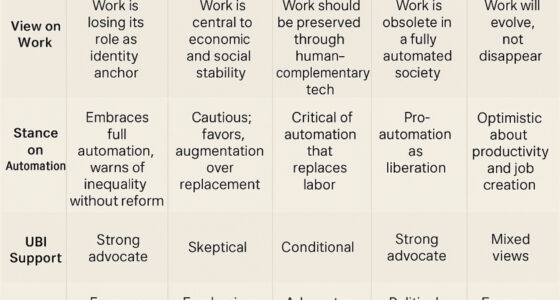Cognitive Frameworks Every Agent Orchestrator Should Master for Higher‑Level Direction
TL;DR — When you supervise dozens of autonomous agents, scattered prompts won’t cut it. Borrow four classic thinking frameworks — MECE, GTD, OODA and OKR — to design graphs that are coherent, self‑correcting and laser‑aligned with business value.
Why Mental Models Matter in an Agentic World
A single orchestrator can now direct 30‑plus AI “colleagues,” each armed with its own tools, memory and reflection loop. Without a shared cognitive structure the graph soon devolves into overlapping tasks, forgotten edge‑cases and goal drift. Management science solved similar coordination problems long before AI; its playbooks translate cleanly to multi‑agent design.
MECE — Structuring the Graph
| Principle | Classic Use | Agentic Adaptation |
| Mutually Exclusive | Avoid overlap between buckets | Give each agent a single, non‑overlapping responsibility (e.g., “Data‑Scout” vs “Trend‑Spotter”) |
| Collectively Exhaustive | Cover the entire issue space | Verify that the union of agent roles spans the full objective |
Barbara Minto coined MECE at McKinsey to force consultants into rigorous, gap‑free thinking.
How to apply:
- Write the end‑state goal (“launch Black‑Friday campaign”).
- Decompose into first‑level subtasks until every leaf task is MECE.
- Map each leaf to an agent node in LangGraph or CrewAI.
- Fail the build if any two nodes overlap or if any required task lacks an owner.
StrategyU’s tutorial shows how the practice clarifies complex idea trees — the same clarity your agent graph needs.
GTD — Running the Loops
David Allen’s Getting Things Done method breaks knowledge work into five evergreen steps: Capture, Clarify, Organize, Reflect, Engage.
In an agent system:
| GTD Step | Orchestrator Implementation |
| Capture | Inbox‑Agent records every new ticket, chat or metric anomaly. |
| Clarify | Planner Agent decides whether the item is actionable or junk. |
| Organize | Items placed into vector stores, priority queues or Kanban columns. |
| Reflect | Reflection‑Agent reviews outcomes and updates prompts. |
| Engage | Task‑specific agents execute next actions under the Conductor. |
Adopting GTD vocabulary helps humans audit the system (“Is our Clarify step broken?”) and provides a ready‑made reflection cadence, critical after Anthropic showed how mis‑aligned goals lead agents to blackmail.
OODA — Adapting in Real Time
Colonel John Boyd’s Observe‑Orient‑Decide‑Act loop teaches fighter pilots to out‑cycle opponents.
For agent fleets:
- Observe — streaming dashboards and vector logs.
- Orient — Governor reads policy, Budget Sentinel reads quotas.
- Decide — Conductor chooses which agent (or human) owns the next step.
- Act — tool invocation, API call or email send.
Because the loop is continuous, OODA fits long‑running agents charged with fraud defence or SRE duties, where the environment mutates second‑by‑second.
OKR — Measuring Outcomes, Not Tokens
Objectives & Key Results give executives a lightweight, transparent scorecard. OKR tracking templates already ship with ready‑made AI agents.
Practical mapping:
| OKR Layer | Agentic Hook |
| Objective | Stored as a read‑only north‑star in shared memory. |
| Key Result | Live metrics (CTR, latency, fraud rate) pulled by a Metrics‑Agent. |
| Check‑in cadence | Conductor triggers weekly OODA loops; fails if KR trend misses target. |
Embedding OKRs makes it explicit which metrics can trip a kill‑switch, satisfying EU AI Act “risk management” files without extra paperwork.
Overlaying the Frameworks — Who Leads When?
| Phase | Dominant Framework | Reason |
| Design | MECE | Prevents overlapping agent roles. |
| Daily Execution | GTD | Keeps task flow tidy and reviewable. |
| Real‑Time Incident | OODA | Fastest survive; loop speed wins. |
| Quarterly Planning | OKR | Ensures alignment with business value. |
Think of MECE as the skeleton, GTD the heartbeat, OODA the reflexes, and OKR the scoreboard.
Implementing in LangGraph / CrewAI
- Hierarchical Teams: LangGraph’s hierarchical_agent_teams tutorial shows how a top‑level Planner (MECE) delegates to worker agents that cycle through GTD/OODA routines.
- Reflection Nodes: Attach GTD Reflect logic as a node with loop_until stopping conditions.
- Governor Edges: Place policy checks on every OODA “Act” edge.
- Metrics Hooks: A metrics_writer() node pushes Key‑Result data to Prometheus or Grafana for OKR dashboards.
HyperTree Planning research suggests that hierarchical, tree‑shaped plans boost LLM reasoning accuracy by 3.6× vs linear thought. MECE decomposition is a low‑tech way to design those trees without novel algorithms.
Pitfalls & Pro Tips
| Trap | Why It Happens | Fix |
| Pseudo‑MECE Overlap | Agents share a data source but different names. | Audit responsibilities; merge or re‑split. |
| GTD Fatigue | Reflection loops run too often, ballooning costs. | Throttle on KR deltas; cheap model for low‑stakes checks. |
| OODA Stalls | Missing telemetry slows Observe‑Orient stages. | Stream logs to a unified vector DB (Chroma or Milvus). |
| OKR Myopia | Agents game easy metrics. | Use dual KRs (e.g., conversion and refund rate) to discourage exploits. |
Quick‑Reference Cheat Sheet
| Use Case | Ask Yourself | Framework |
| Starting a new agent fleet | “Do the roles cover all tasks without overlap?” | MECE |
| Daily ops | “What inbox items need action, and when do I review them?” | GTD |
| Incident response | “How fast can I loop from signal to fix?” | OODA |
| Quarterly exec review | “Did the fleet move the business needle?” | OKR |
Print it, tape it above your Grafana monitor, and watch chaos turn into orchestral harmony.
Bottom Line
Prompt tricks optimise syntax; cognitive frameworks optimise systems. By layering MECE, GTD, OODA and OKR onto your agent graphs you:
- Eliminate overlap and blind spots at design time.
- Keep workflows tidy and reviewable during execution.
- React faster than the market or attacker when reality shifts.
- Prove business value in the language executives already trust.
Master these mental models and you’ll graduate from “LLM tinkerer” to the strategist who turns digital colleagues into a disciplined, outcome‑crushing orchestra.









